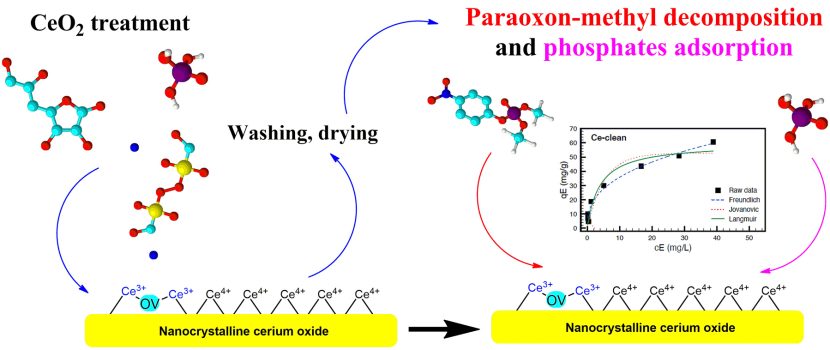
Effect of CeO2 surface modification on its catalytic and adsorption properties
Cerium dioxide is one of the oxides of rare earth elements. It has remarkable physical and chemical properties, particularly the ability to cleave many chemical bonds in hazardous and biologically active substances. This ability is related to the method of its synthesis, as well as the heat treatment of intermediates for its synthesis, especially to the surface properties of its particles. We asked ourselves the question to what extent the modification of the CeO2 surface with various chemical agents (oxidizing/reducing) will affect the catalytic and adsorption properties of CeO2. Based on our experiments, it was proven that modification with H2O, H2O2, ascorbic acid, ammonium peroxodisulphate minimally affects the adsorption of inorganic phosphates, which in excess cause eutrophication of waters. While in the decomposition of organophosphates widely used as pesticides, the modification had a strong effect on the catalytic properties and the activity of CeO2 was suppressed. Suppression of the ability of CeO2 to decompose organophosphorus substances is related to the blocking of active sites on the CeO2 surface. As we know from our previous work, the adsorption and catalysis are strongly affected by the presence of surface groups, and modification had a significant positive and negative effect.
J. Ederer, P. Janoš, L. Vrtoch, M. Šťastný, J. Henych, J. Matoušek, M. Kormunda, P. Ryšánek., Effect of Surface Treatment of Nanocrystalline CeO2 on Its Dephosphorylation Activity and Adsorption of Inorganic Phosphates. Langmuir 40 (2024) 302
Odkaz na článek: https://doi.org/10.1021/acs.langmuir.3c02576